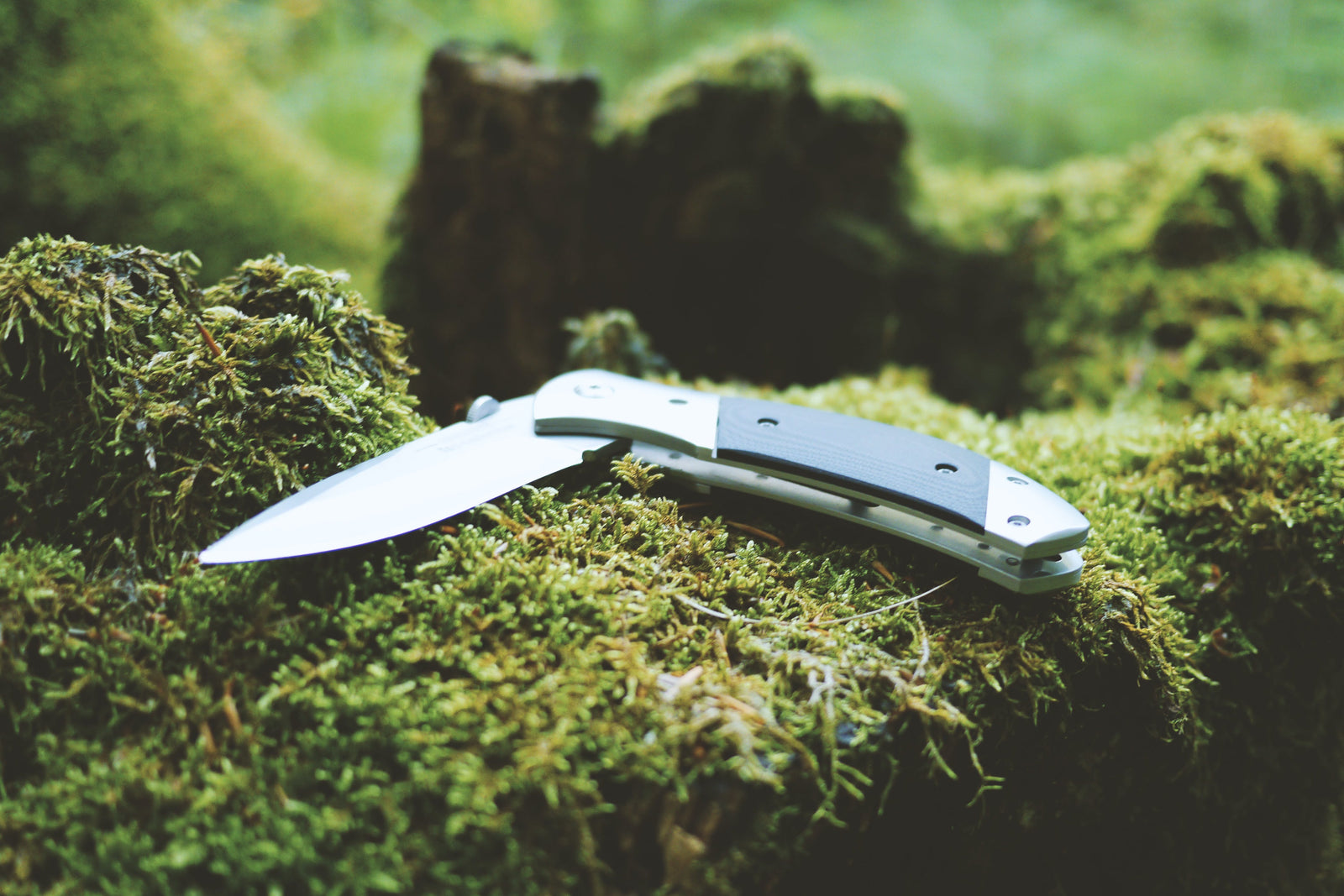An introduction to the world of knife blade materials: D2 and 440C steel in focus

Knives have always been essential tools for humans, and their blades play a crucial role in their performance and durability. Choosing the right blade material can make a big difference in sharpness, hardness, corrosion resistance and edge retention. In this article, we'll take a closer look at two popular blade materials: D2 and 440C steel.
D2 steel:
D2 steel is a tool steel known for its exceptional hardness and wear resistance. It belongs to the stainless steel family and contains a high proportion of carbon (about 1.5%), chromium (about 12%) and molybdenum (about 1%). This alloy composition gives D2 steel excellent edge retention, making it ideal for applications that require long edge life, such as cutting wood or plastic.
One of the remarkable properties of D2 steel is its ability to hold a very fine and sharp edge, even under intensive use. This makes D2 steel knives particularly popular with professional users and outdoor enthusiasts who need a reliable tool for demanding tasks.
Although D2 steel has excellent edge retention, it is more susceptible to corrosion compared to some other blade materials such as stainless steel. Therefore, the care and maintenance of D2 steel knives requires special attention to prevent rust formation and maintain the performance of the knife.
440C steel:
440C steel is a high-alloy stainless steel known for its excellent corrosion resistance and high hardness. It contains approximately 1% carbon, 17% chromium and 1% molybdenum, which gives it excellent edge retention and wear resistance. 440C steel knives are popular for their ability to hold a sharp edge while remaining rust-free, making them ideal for use in wet or aggressive environments.
Another advantage of 440C steel is its relatively easy machinability, allowing manufacturers to produce precise, high-quality blades. This makes 440C steel knives suitable for both everyday use and demanding tasks such as hunting, fishing and outdoor adventures.
Although 440C steel has excellent corrosion resistance, it may not be as resistant to wear as some other blade materials such as D2 steel. Still, 440C steel knives offer an excellent combination of hardness, sharpness and corrosion resistance at an affordable price.
Stainless steel:
Stainless steel is one of the most common materials for knife blades. It is robust, corrosion-resistant and relatively easy to sharpen. Stainless steel knives are generally affordable and work well for everyday use. They come in different grades and compositions, which can affect their hardness, cutting performance and rust resistance.
Conclusion:
D2 and 440C steel are two popular blade materials, each with their own unique properties and applications. D2 steel features exceptional hardness and edge retention and is particularly suitable for demanding tasks, while 440C steel offers excellent corrosion resistance and edge retention and is ideal for use in wet environments. The choice between these two materials depends on individual preferences, intended use and budget. In any case, both D2 and 440C steel knives offer premium performance and reliability that meet the needs of professional users and outdoor enthusiasts.




Leave a comment